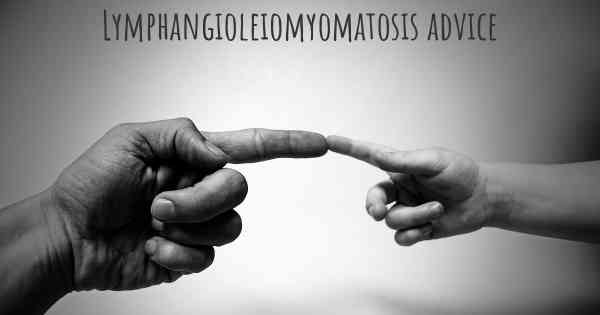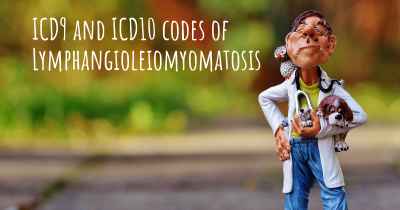Which advice would you give to someone who has just been diagnosed with Lymphangioleiomyomatosis?
See some advice from people with experience in Lymphangioleiomyomatosis to people who have just been diagnosed with Lymphangioleiomyomatosis

Lymphangioleiomyomatosis (LAM) is a rare lung disease that primarily affects women of childbearing age. Being diagnosed with LAM can be overwhelming and may leave you with many questions and concerns. While it is important to consult with your healthcare provider for personalized advice, here are some general recommendations to consider:
1. Educate Yourself
Take the time to learn about LAM and its symptoms, causes, and treatment options. Understanding the disease will empower you to make informed decisions about your health. Reliable sources such as medical journals, reputable websites, and patient support organizations can provide valuable information.
2. Build a Support Network
Connect with others who have LAM. Joining support groups, both online and in-person, can provide you with a sense of community and a platform to share experiences, concerns, and advice. Hearing from others who have faced similar challenges can be comforting and enlightening.
3. Seek Expert Medical Care
Find a healthcare provider who specializes in treating LAM or has experience with rare lung diseases. These specialists will have the knowledge and expertise to guide you through your treatment journey. Regular check-ups and open communication with your healthcare team are crucial for managing your condition effectively.
4. Develop a Treatment Plan
Work closely with your healthcare provider to develop a personalized treatment plan. Treatment options for LAM may include medication, pulmonary rehabilitation, oxygen therapy, and lung transplantation. Your healthcare team will consider your specific symptoms, disease progression, and overall health to determine the most appropriate course of action.
5. Prioritize Your Health
Adopt a healthy lifestyle to support your overall well-being. This includes eating a balanced diet, engaging in regular exercise (as recommended by your healthcare provider), getting enough rest, and managing stress. Taking care of your physical and mental health can positively impact your ability to cope with LAM.
6. Monitor Your Symptoms
Keep track of any changes in your symptoms and report them to your healthcare provider. Regular monitoring will help identify any disease progression or potential complications. Understanding your symptoms and their patterns will enable you to take appropriate action and seek medical attention when necessary.
7. Stay Up-to-Date with Research
Stay informed about the latest advancements in LAM research. New treatments and clinical trials may become available, offering potential options for improved management or even a cure. Discuss these developments with your healthcare provider to determine if they are suitable for you.
8. Consider Family Planning
If you are of childbearing age, it is important to discuss family planning with your healthcare provider. LAM is associated with an increased risk of complications during pregnancy, so it is crucial to weigh the potential risks and benefits. Your healthcare team can provide guidance and support in making informed decisions about starting or expanding your family.
9. Take Care of Your Emotional Well-being
Living with a chronic illness can be emotionally challenging. It is essential to prioritize your mental health and seek support when needed. Consider talking to a therapist or counselor who specializes in chronic illness or joining support groups that focus on the emotional aspects of living with LAM.
10. Stay Positive and Hopeful
Remember that a diagnosis of LAM does not define you. Stay positive and focus on the aspects of your life that bring you joy and fulfillment. Surround yourself with loved ones who provide support and encouragement. With advancements in medical research and ongoing support, there is hope for a brighter future.
While these recommendations can provide a starting point, it is important to remember that every individual's experience with LAM is unique. Your healthcare provider will be your best resource for personalized advice and guidance. Together, you can develop a comprehensive plan to manage your condition and improve your quality of life.








